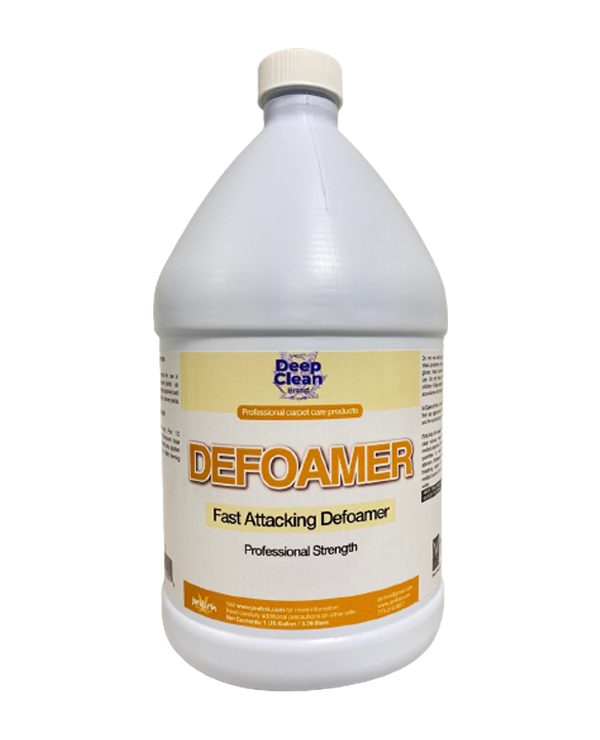Checking Out the Benefits of a Chemical Defoamer in Production and Manufacturing
The integration of chemical defoamers in manufacturing and manufacturing processes uses a critical advantage by addressing one of the relentless difficulties in commercial procedures: foam control. As manufacturers make every effort to optimize processes and boost consumer complete satisfaction, the role of chemical defoamers becomes significantly important.
Significance of Foam Control
While the visibility of foam in producing procedures can in some cases appear safe, efficient foam control is important for optimizing functional effectiveness and item quality. Foam can disrupt different phases of production, causing ineffectiveness that might prolong and enhance prices handling times. In industries such as food and beverage, drugs, and chemicals, unchecked foam can block devices, disrupt automated systems, and inevitably lead to item variances.

Implementing reliable foam control techniques not only enhances efficiency but also supports regulatory conformity in markets where foam can bring about ecological concerns. By using chemical defoamers, producers can reduce these difficulties, ensuring smoother operations and higher-quality final product. Ultimately, focusing on foam control is a crucial facet of production that can yield significant advantages in terms of security, efficiency, and item integrity.
Kinds of Chemical Defoamers
What types of chemical defoamers are readily available for making processes, and exactly how do they vary in application? Chemical defoamers can be classified right into three primary kinds: silicone-based, organic, and inorganic defoamers. - Chemical Defoamer

Organic defoamers, typically stemmed from natural oils or fats, are efficient in a series of applications, consisting of food and beverage manufacturing. They are often favored for their reduced poisoning and ecological influence, ensuring compliance with sector guidelines.

Each sort of defoamer offers unique purposes based upon the chemical make-up and the particular requirements of the manufacturing process, allowing producers to select one of the most appropriate alternative for their particular needs.

Benefits in Manufacturing Efficiency
Chemical defoamers play a vital duty in boosting manufacturing performance by properly managing foam generation during different processes. Foam can prevent manufacturing rates, disrupt equipment procedure, and cause pricey downtime. By including chemical defoamers, makers can mitigate these problems, guaranteeing smoother workflow and increased general performance.
The usage of chemical defoamers helps enhance the operational efficiency of equipment such as pumps, activators, and mixers. With decreased foam, these machines can run at their meant capacity, decreasing the risk of overflow and making it possible for consistent handling. This leads to far better resource use and higher throughput.
Moreover, chemical defoamers promote faster processing times by reducing the moment needed for foam elimination. This acceleration can considerably impact manufacturing routines, allowing manufacturers to meet customer need more successfully. Furthermore, the use of defoamers adds to decrease energy consumption, as machinery runs much more effectively with minimized foam interference.
Influence On Product Top Quality
Foam control is not just important for keeping effectiveness in making procedures however likewise plays a considerable look at this now duty in making sure item quality. Too much foam can introduce air into formulations, causing incongruities in the end product. This can show up as issues such as spaces, uneven appearances, or substandard finishes, which undermine the desired high quality and performance of the product.
Moreover, foam can hinder the homogeneity of blends, causing uneven circulation of energetic components. In sectors such as layers, cosmetics, and food manufacturing, this can result in variants in shade, preference, and overall effectiveness. By utilizing a chemical defoamer, manufacturers can mitigate these risks, guaranteeing that items satisfy stringent quality specs.
Additionally, regulating foam can boost the security of suspensions and emulsions, which is vital for making certain shelf-life and customer fulfillment. With boosted product consistency and reduced problems, manufacturers can accomplish higher standards of quality assurance, eventually leading to enhanced client trust fund and brand loyalty.
Cost-Effectiveness and ROI
Efficient foam control not just enhances product top quality yet likewise adds considerably to the general cost-effectiveness of manufacturing procedures. The use of chemical defoamers decreases foam-related issues, which can otherwise result in manufacturing hold-ups, devices malfunctions, and increased energy consumption. By lowering foam, makers can enhance their processes, published here resulting in higher throughput and efficiency.
Investing in chemical defoamers can generate a significant return on investment (ROI) The first expenses connected with these ingredients are commonly balanced out by the savings recognized from decreased downtime see page and boosted material yield. Additionally, boosted item high quality can minimize waste and rework prices, further boosting economic efficiency.
Furthermore, efficient foam control can cause lowered water and power use, adding to lower functional costs. This is especially important in markets where source efficiency is extremely important. By integrating chemical defoamers right into their processes, producers can achieve long-lasting cost savings while keeping competitive pricing in the industry.
Final Thought
In verdict, the combination of chemical defoamers in manufacturing and manufacturing processes is important for optimizing functional effectiveness and enhancing product top quality. The advantages used by chemical defoamers not only sustain governing conformity but additionally supply an affordable side in the production landscape.
The combination of chemical defoamers in production and production processes offers a strategic advantage by addressing one of the persistent challenges in industrial procedures: foam control.While the existence of foam in producing processes can sometimes appear safe, efficient foam control is essential for maximizing functional effectiveness and product top quality.Chemical defoamers play a vital duty in enhancing manufacturing performance by efficiently regulating foam generation throughout different processes.Moreover, chemical defoamers assist in faster processing times by reducing the time needed for foam elimination. In addition, the use of defoamers contributes to reduce energy consumption, as machinery operates extra efficiently with minimized foam disturbance.